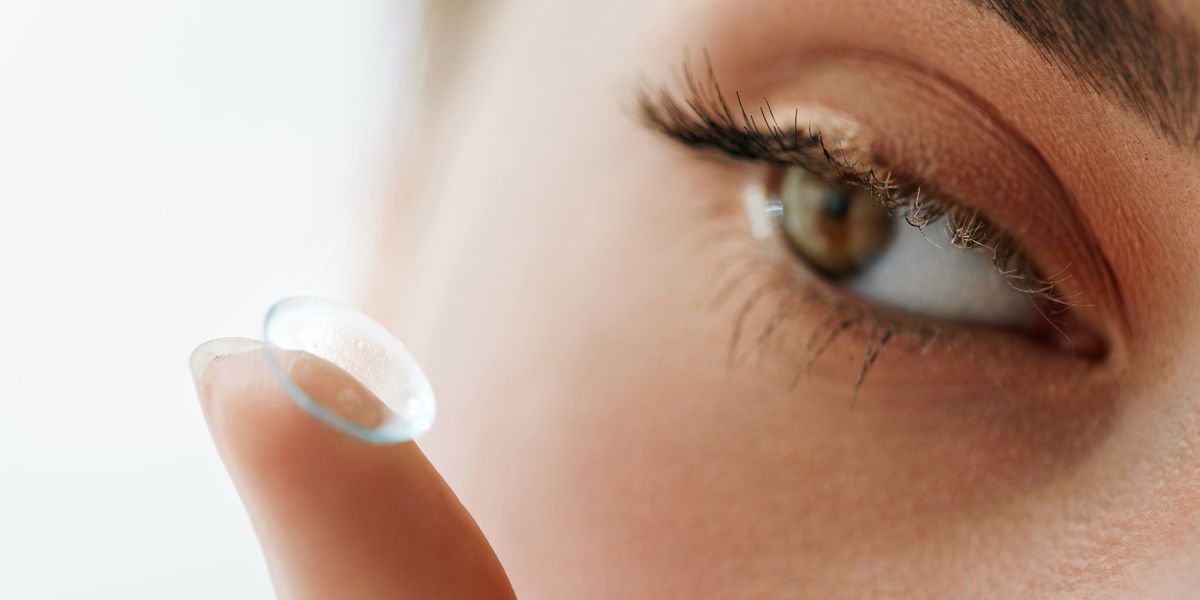
Eighteen kinds of soft contact lenses have detectable levels of organic fluorine, an indicator of the group of chemicals known as PFAS, according to a new report from Mamavation.
Partnering with EHN.org, the environmental wellness blog and community had the contact lenses tested by a U.S.-Environmental-Protection-Agency-certified lab and found levels of organic fluorine ranging from 105 parts per million, or ppm, to 20,700 ppm. Eight out of the 18 lenses tested had more than 4,000 ppm of organic fluorine.
Fluorine is a strong indicator of “forever chemicals”— which have been linked to everything from cancer to birth defects to lower vaccine effectiveness.
EHN.org partially funded the testing and Pete Myers, chief scientist of Environmental Health Sciences, which publishes Environmental Health News, reviewed the findings. The report builds EHN.org and Mamavation’s growing library of consumer products tested for evidence of PFAS, including products such as pasta and tomato sauces, sports bras, tampons and dental floss.
While many are aware of PFAS pollution in water, the testing finds that we’re also exposed by the things we wear or eat. You can explore the reporting, “PFAS on our shelves and in our bodies,” here.
While the health impacts of PFAS exposure via the eyes are still somewhat unclear, Linda Birnbaum, scientist emeritus and former director of the National Institute of Environmental Health Sciences and National Toxicology Program, told Mamavation “Your eyes are one of the most sensitive parts of your body. Therefore, it’s concerning to see the presence of organic fluorine, which is likely a type of PFAS, found in all soft contact lens products tested. What about the idea of doing no harm? Do we have proof these products are safe? A lack of safety studies does not qualify as ‘safety,’ which is what is happening here.”
Why is fluorine in contact lenses?

Given the high levels found during testing, it’s likely that fluoropolymers (which are usually PFAS chemicals) are intentionally added to contact lenses in order to soften the lenses and allow oxygen to pass through.
In a 2020 study, researchers warned of the human health risks of fluoropolymers.
“Given fluoropolymers’ extreme persistence; emissions associated with their production, use, and disposal; and a high likelihood for human exposure to PFAS, their production and uses should be curtailed except in cases of essential uses,” they wrote.
Terrence Collins, Teresa Heinz Professor of Green Chemistry & Director of the Institute for Green Sciences at Carnegie Mellon University, told Mamavation that fluoropolymers improve the “technical performance of contact lenses at attractive price performances,” but this ignores health and environmental impacts.
“If you use fluoropolymer-containing contact lenses, you are likely to become permanently contaminated. No one today can tell you that fluoropolymer exposures are safe, because no jurisdiction has been demanding the development and scrutiny of appropriate safety testing.”
What brands had contamination?
All of the contact lenses — which were donated to Mamavation by someone working at an ophthalmologist’s office in the fall of 2022 — had organic fluorine.
The testing included different products from three popular brands: Acuvue, Alcon and Coopervision. The three lenses with the highest amounts of organic fluorine were Alcon Air OPTIX (No Hydraglide) Soft Contact Lenses for Astigmatism (20,000 ppm), Alcon AIR OPTIX COLORS Contact Lenses with Smartshield Technology (20,700 ppm) and Alcon Total30 Contact Lenses for Daily Wear (20,400 ppm).
See the full report at Mamavation.
The testing is part of an ongoing effort by Mamavation and EHN.org to identify PFAS in common consumer products. Follow our PFAS testing project with Mamavation at the series landing page.
Want to know more about PFAS? Check out our comprehensive guide.




